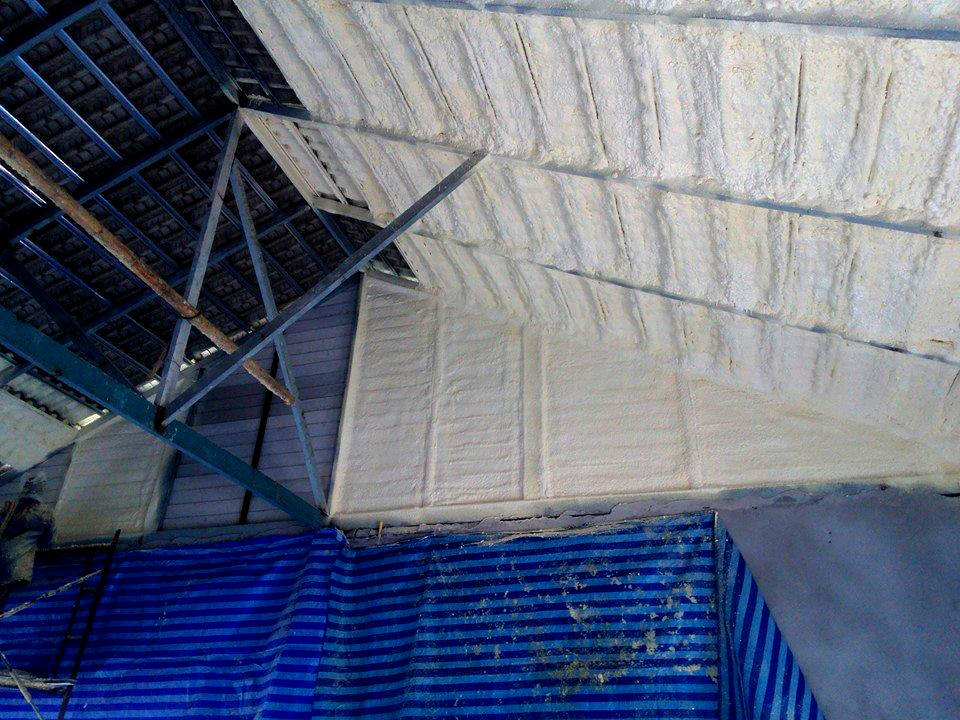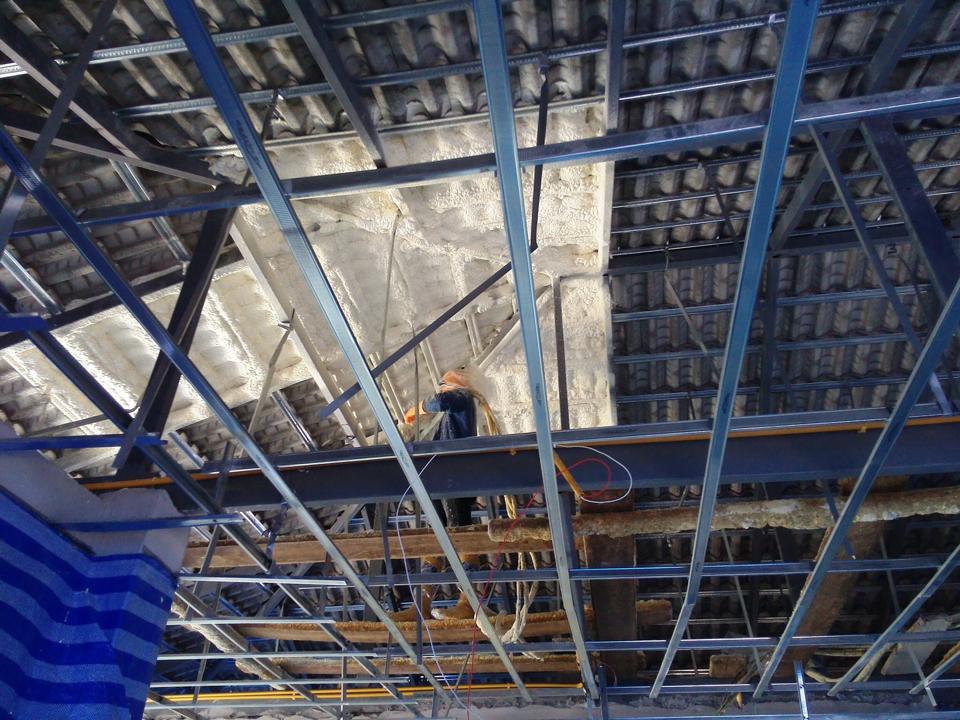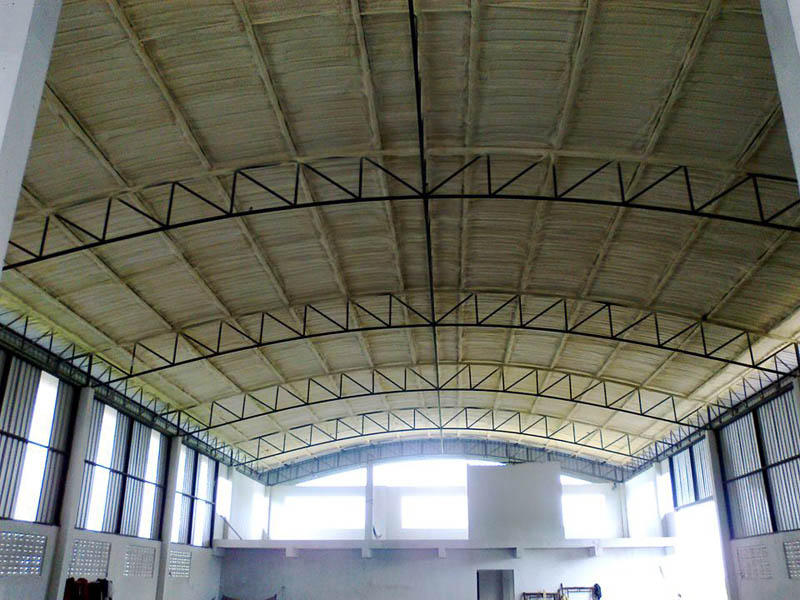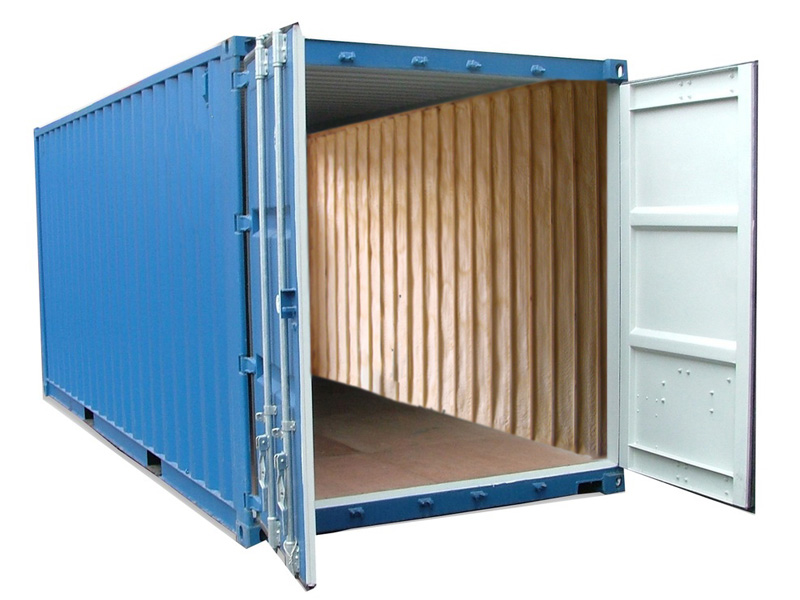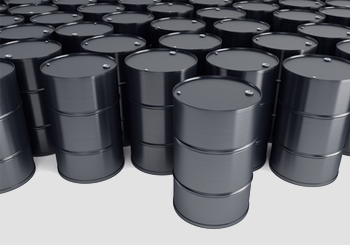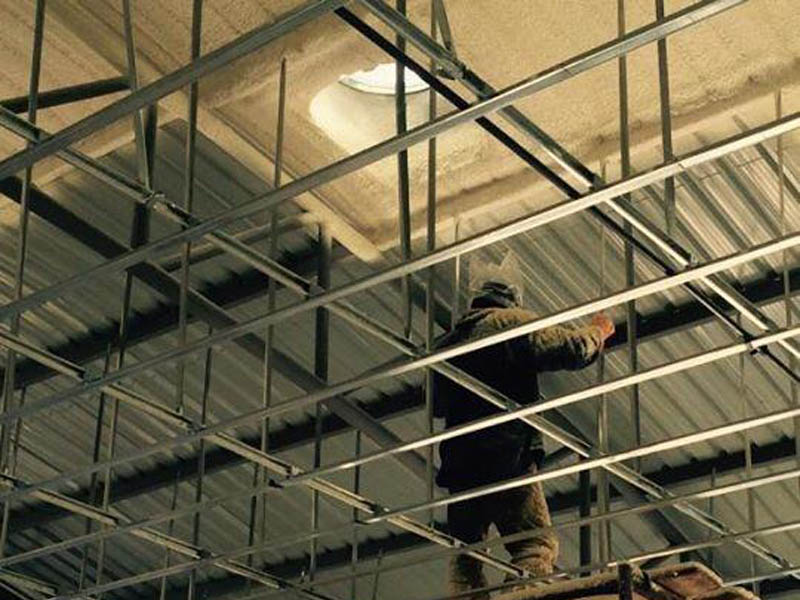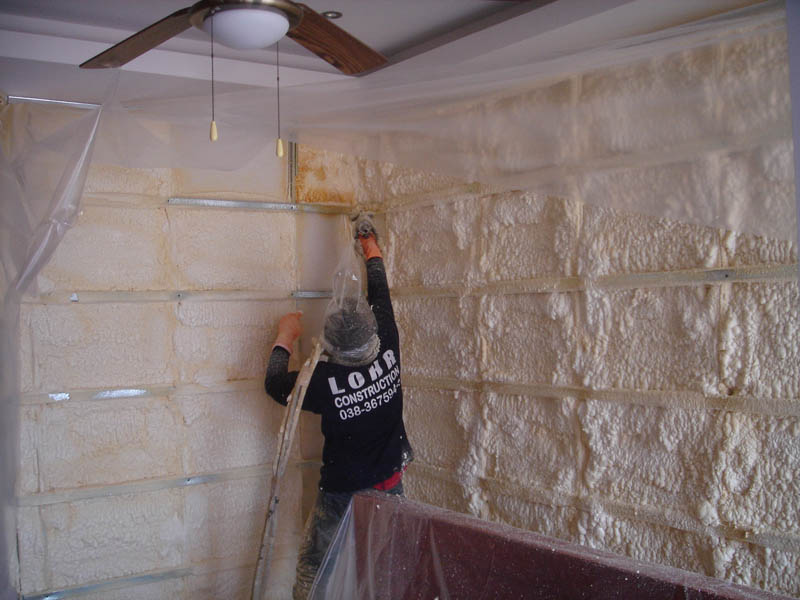Our raw material: PU-foam
Polyurethane solidifying foam is a chemically produced liquid mixture, that forms a cell structure. It is the most advanced insulation material available today. A controlled reaction, which takes place within the com-pound, causes the foam to expand as soon as it is ejected from the spray gun. It solidifies immediately and amalgamates permanently with the treated surface. The effectiveness of Polyurethane foam is achieved by the trillions of air pockets, which make up this insulation material. PU-hardfoam should not be confused with ordinary insulation foams. Its hardness and durability are far superior.
Product features
Good adhesion
Polyurethane foam is in itself a highly adhesive material so that it can be applied layer upon layer until the desired thickness is achieved. PU-foam also sticks to most dry sub-stances such as metal, gypsum panels, roof tiles, brick walls, timber, paper and to most kinds of plastic.
High temperature resistance
Its high range of temperature resist-ance from minus 400 to plus 300 degrees Fahrenheit makes PU-foam a material for unlimited uses.
Watertight
The extremely low permeability to humidity and steam render PU-foam waterproof.
Resistance to chemicals
Polyurethane foam has an excellent resistance to chemicals and is virtually indestructible. Only very few acids can alter its properties.
Vermin-proof
Since PU-foam has no nutritive value, it does not attract fungi, termites, rodents or insects.
Odorless
Because PU-foam is completely odorless it is very well suited for insulating food outlets and cold storage rooms. PU-foam does neither create nor absorb odors.
Fireproof
PU-foam contains a fire-retardant agent according to German specifications.
Non-deteriorating
In laboratory tests conducted by BASF simulating the accelerated passage of time, it has been proven that PU-foam even after 80 years does not show any significant deterioration.
Environment friendly
PU-foam does not create any dust and is completely free of toxins.
Product usage:
Insulation of roofs and walls
One of the main areas of application is the insulation of low or high pitched roofs as well as outer walls. The very high insulating property of this product lowers the energy consumption of air conditioning units and creates a pleasant temperature in non-air-conditioned rooms.Stabilization, sealing
If used in properly prepared old roofs PU-foam can actually seal leaks or fill the gaps in previously applied insula-tion materials, which eliminates the pulling down of old structures. PU-foam enhances the stability of roofs. Because of its low weight it adds only 1 kg to 1 square meter of treated surface. PU-foam makes your roof burglar proof.Insulation of industrial plants
PU-foam insulates tanks, all sorts of containers and ducts. Its resistance to chemicals makes it especially useful in the petrochemical and cryogenic industries. It is also ideal for the insulation of cold storage rooms and refrigeration units as well as all things exposed to moisture. Fiberglass wool for example is hygroscopic, which means that with the high humidity in the tropics it absorbs a great deal of water and loses therefore its insulation properties. With PU-foam a steam barrier will only be necessary in extremely wet or humid locations. In the food processing industry PU-foam is a hygienic insulation and sealing material due to its low odor absorption. In hotels PU-foam insulation pays for itself in a very short time through energy savings.The transport area
PU-foam is used on all kinds of vehicles for the purpose of insulation, reinforcement, elimination of vibrations and soundproofing. For the insulation of refrigerator vans PU-foam is the ideal material.Floating objects
Due to its low weight PU-foam en-hances buoyancy and stability while insulating boats, buoys and other floating objects. A properly insulated object of this nature becomes unsinkable. For this reason the Lloyd's insurance company has issued a certificate for PU-foam to be used on all lifeboats.Protection against corrosion
PU-foam, when sprayed on to iron beams, forms an airtight casing thus preventing corrosion.Soundproofing
PU-foam reduces the propagation of sound in many areas. Engine noises can be made tolerable by covering the unit with egg cartons which have been treated with PU-foam. The spread of other sounds such as in music and TV studios, discotheques, hobby work-shops and the likes can be greatly reduced.Decoration
Interior designers find many uses for PU-foam: landscapes and figures of foam make shop windows, bars, restaurants, discos, sales departments and showrooms more attractive.Technical data
| Examination | measurements |
|---|---|
| k-value / r-value | 0.74 / 9.09 |
| Density | 40 kg/m³ |
| Compression strength | 0.39 N/mm² |
| Compression | 7% |
| Bending stress | 0.59 N/mm² |
| Max. sag | 20 mm |
| Water absorption | (168 hrs.) 1.4 Vol. % |
| Shape retention | 3,4% |
| Reaction to fire | B2 (DIN 4102 |
PU-foam in comparison
The insulation capacity of PU-foam is several times that of other insulating materials, as is shown in the following diagram. Please bear in mind that the insulation capacity diminishes rapidly in all the compared materials when these absorb humidity, something which PU-foam never does.
| PU-foam | 2.5 cm |
| Cork | 6.0 cm |
| Hard fiber plate | 6.5 cm |
| Mineral wool, fiberglass | 6.7 cm |
| Chipboard | 14.0 cm |
| Cement blocks | 38.0 |
| Brick wall | 86.0 cm |
Comparison of physical properties
| Property | PU-foam | Fiberglass | Polystyrene | Vinyl |
|---|---|---|---|---|
| inflammable | no | no | yes | yes |
| K-factor | 0.11 | 0.22 | 0.28 | 0.28 |
| R-factor | 9.09 | 4.45 | 3.67 | 3.67 |
| tensile strength | 30-45 kg | 80 kg | 29-31 kg | - |
| shear strength | 29 kg | - | - | - |
| compress. strength | 36 kg/cm² | - | - | - |
| vapor permeability | 1.3" | - | 2" | 0.12 |

